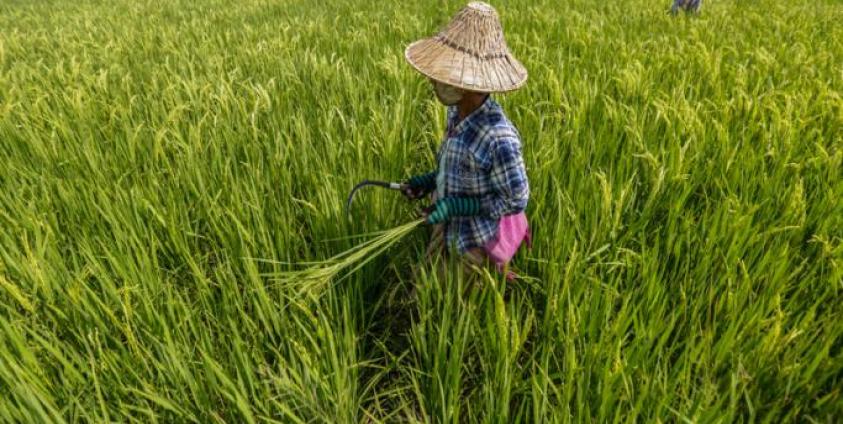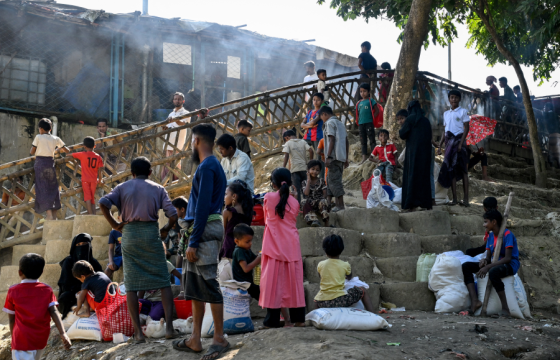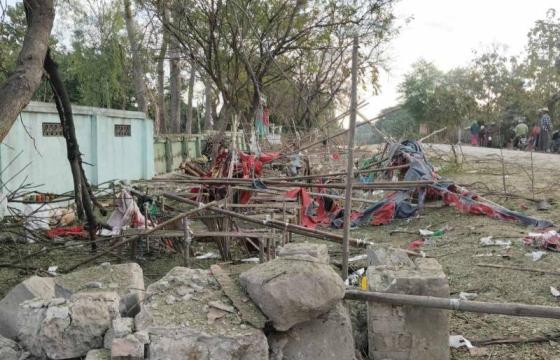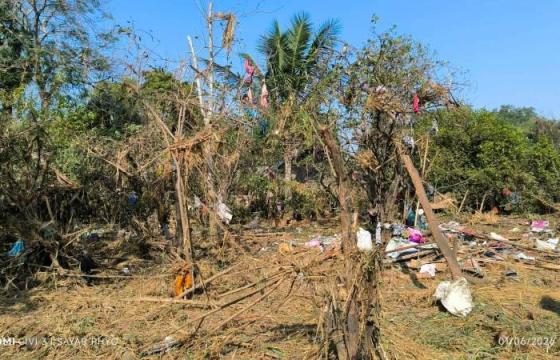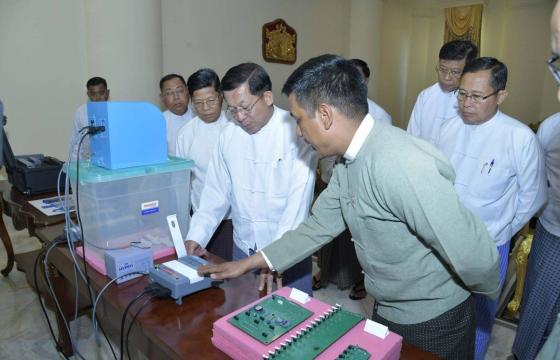The bi-annual report from the World Bank, Myanmar Economic Monitor (MEM), covering the period July-Dec 2019, was released on the 15th Jan 2020 highlights elements of resilience in the economy and also the vulnerabilities that need to be addressed in the face of global slowdown and domestic uncertainties. As a periodic analysis it provides evidence on past performance as well as outlook for the coming years. As a policy advice this publication of WB is important as it can be indicative of the things that could unfold in the coming years.
A broad strokes analysis points out that a stable growth is expected in the medium term. The growth in 2018/19 (6.3%) has been marginally better than the previous year’s 6.2%. However there is no change in the pattern of growth, with services taking the lead. Growth is expected to be spearheaded by investments in the transport and communication sector and planned infrastructure projects. According to the MEM, improved business sentiment, better access to electricity and improved availability of credit particularly for construction, manufacturing and trade activities would spur the growth in the coming years. It is expected to contribute to the growth of the secondary sector.
Agriculture continues to grow at a slow pace, registering 1.6%. This structural impediment needs to be addressed urgently as it will have cascading effect on the industry and service sectors.
While it is a fact that Myanmar is undergoing structural transformation, with decline in contribution of agriculture to the GDP, from 25% to 24%, still over 62 per cent of the population depend on agriculture and allied sectors most often at subsistence levels of earnings. Poverty is more acute in rural areas. Movement of people from rural to urban areas in search of employment would also put pressure on cities which lack several basic infrastructure facilities. It is for this reason that strategies for agro-industries, value addition and market linkages are needed. Secondary cities and towns need to be developed in a systematic way as growth poles, which has been the strategy adopted by several other countries.
Myanmar’s economy seems to be that of a service-sector and industry-led growth story contributing to 39% and 37% of GDP respectively. However, this is masked by the fact that agriculture and rural areas still carry disproportionate burden of low wage and skilled employment. With overwhelming population in rural areas, and with industrial sector remaining mostly as primary extractive industries, it would in fact challenge the assumptions of an FDI focused, export-led growth strategy. Sustainability of this approach is in fact under severe strain as data on various parameters indicate.
There are a few other aspects that need attention. Retail inflation being on the rise, with food and electricity prices taking the lead is a cause of concern. So also insecurity and violence on borders remains an issue to watch out for as they would impact the overall volatility of the country’s economy.
MEM analysis raises some pertinent questions vis a vis structure of the economy. What ails the agriculture sector in Myanmar and how government can intervene and improve it? It is pointed out that 53.7% of agriculture output value is accounted for by paddy rice, which would mean that diversification in agriculture as well as productivity improvements need to be undertaken on an urgent basis.
Mechanization has helped to some extent, but modernization is needed through public investment. Every farmer is a private sector player in agriculture and this perspective appears to be missing in the scheme of things. Private sector participation in agriculture is talked about from the perspective of corporate agriculture, cash crops, foreign and domestic investments in seeds, fertilizer and other input companies, financial intermediation, etc. However public investment is critical in stimulating agriculture productivity, as it is the poor and subsistence farmers who need to adopt technology and modern techniques in order to enhance their production. Such strategies need to be funded and supported. Digital advancements may help to some extent but such private sector players investing in farm productivity appears to be a tall order, especially for the reason that there would be substantial sunk costs. All over the world, it is the public investments that enable small holders become more productive. Climate resilient small holder agriculture and value addition and high value crops are to be encouraged in order to enhance incomes and diversify into new frontiers.
Diversification, investment and productivity enhancement in agriculture is the need of the hour and the potential of agriculture has not been tapped on par with the focus on other areas like industry and services. How can this be addressed is a challenge and there seem to be little concrete to offer from the MEM in terms of policy options or advice.
The focus on private sector growth and policy engagement on this front is a special topic that was covered by the MEM. The critical question is can an organized private sector ‘lead’ the growth and shared prosperity, given its size, structure and its historical evolution in Myanmar? It is important that in a market oriented economy, private sector has to play its role, however, limitations in terms of its contribution to the poverty reduction, tackling inequality need to be factored. Their contribution in terms of adhering to responsible business - to labour laws and environmental protection is important which may enhance their social value. Here comes the role of policies and how extent Myanmar government and international agencies facilitate the creation, implementation and monitoring of responsible private sector.
One more critical question is how the private sector is complimented by the investments by the public sector. There are areas in which the public sector has a paramount role to invest. For example, would creation of a business environment for the financial sector in rural areas through instruments like micro finance lead to rural prosperity? That needs to be complimented through investments in agriculture infrastructure which can be done by the government alone. (Like irrigation canal improvement, extension services and etc). Even from the framework of SDGs, (or MSDP), public sector has a major role and private sector has a complimentary role. Goals like gender equality, reduction in inequalities can be addressed through public policies.
Developing capacity of market players in private sector is identified as an important policy step. This would mean along with PSD in secondary and tertiary sectors, expansion of such services in rural areas like farmer service centres, skill development centres for non-farm sector and etc, which again can be undertaken by the public sector investment in a big way.
Peace and conflict resolution are also identified by MEM as important elements that can foster private investments and private sector development especially in conflict affected areas. The econometric analysis on the relationship between business density/intensity and conflict points out that long term presence of armed actors in townships affects the private business intensity (it is not the conflict per se), which would in practical terms “… reflects poor business environment (rent seeking, multiple authorities engaged in taxation), conflict- associated risks, and higher levels of outmigration among working adults who may otherwise be employers”.
This sums up the challenges that Myanmar is facing in terms of secondary and services sector development in conflict areas. Securing the peace dividend in terms of stable and predictable environment to undertake businesses can be achieved through the collective will of all stakeholders including government and non state actors.

